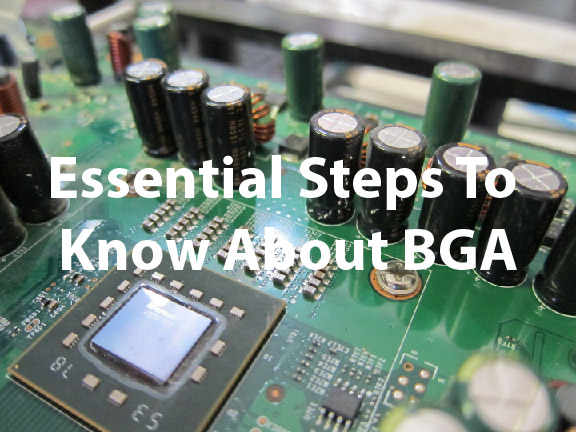But although these 3d printed structures are cheap and easy to implement they can lack efficiency. They can be made complex, but for the moment complex 3d printed PCBs are difficult to produce in large volumes. Essential Steps to Know about BGA
When working with PCBs there can be many terms and acronyms that are confusing, and one such term is BGA. BGA, or Ball Grid Array, is a small package on a printed circuit board that is used to mount or hold microprocessors, completing integrated circuits. This article will provide 4 easy steps to get used to and understand BGAs.
Step 1: Benefits of using BGA
There are several different systems in place in order to mount devices in an integrated circuit. One of the earliest is the PGA, or Pin Grid Array, which had many pins to connect the circuit as opposed to pads, which the BGA system has. Although the PGA worked for several years, as technology advanced the pins were more and more compacted together and were not as efficient as BGA, which uses pads that conform to the circuit through solder, which is heated and then melted onto the board. BGA is also efficient when it comes to overheating, as it is able to release heat extremely well preventing the temperature of the circuit rising. This is due to lower thermal resistance of the mounting package. BGAs, because they are so close to the printed circuit board they reside on, have better electrical performance.
Also read: Solder Mask Design Changes Help Prevent BGA Pad Lifting
Step 2: Setbacks of the BGA
As with every piece of technology, there are some unfortunate disadvantages that the BGA has which you must understand if you are working with them. Luckily, the cons are not many, nor will they affect the circuit: it is still your job to prevent any problems as a result of these drawbacks. To begin with, BGAs are less flexible than previous iterations of grid arrays, meaning that bending or breakage may occur in a non-stabilized environment. Similarly, if you have a BGA under extreme conditions, such as extreme heat or extreme pressure, the solder on the BGA can fail to connect the components of the package. If you keep your BGAs in a stable system when manufacturing or working with them, then most of these problems will not affect you.
Step 3: Inspection
BGAs can be hard to inspect for issues when a circuit is no longer working, sometimes requiring X-ray inspection or a CT scanning machine to determine the cause of the problem with the circuit. Due to this, make sure you have the necessary equipment to work on the BGAs, and if you cannot afford to visually scan it, electrical techniques can also be useful, and physically inspecting the BGA is a cheap but dangerous method that can be used as well.
Step 4: Knowing the terminology
Although you are by now familiar with “BGA”, there are multiple other kinds of ball grid arrays that sound but are definitely not similar to BGAs, such as “CABGA”, which stands for Chip Array Ball Grid Array, and “MBGA”, which stands for Micro Ball Grid Array. A full list of variants on the BGA line of equipment can be found online, and we recommend that you check it out to fully familiarize yourself with all types of grid arrays.






